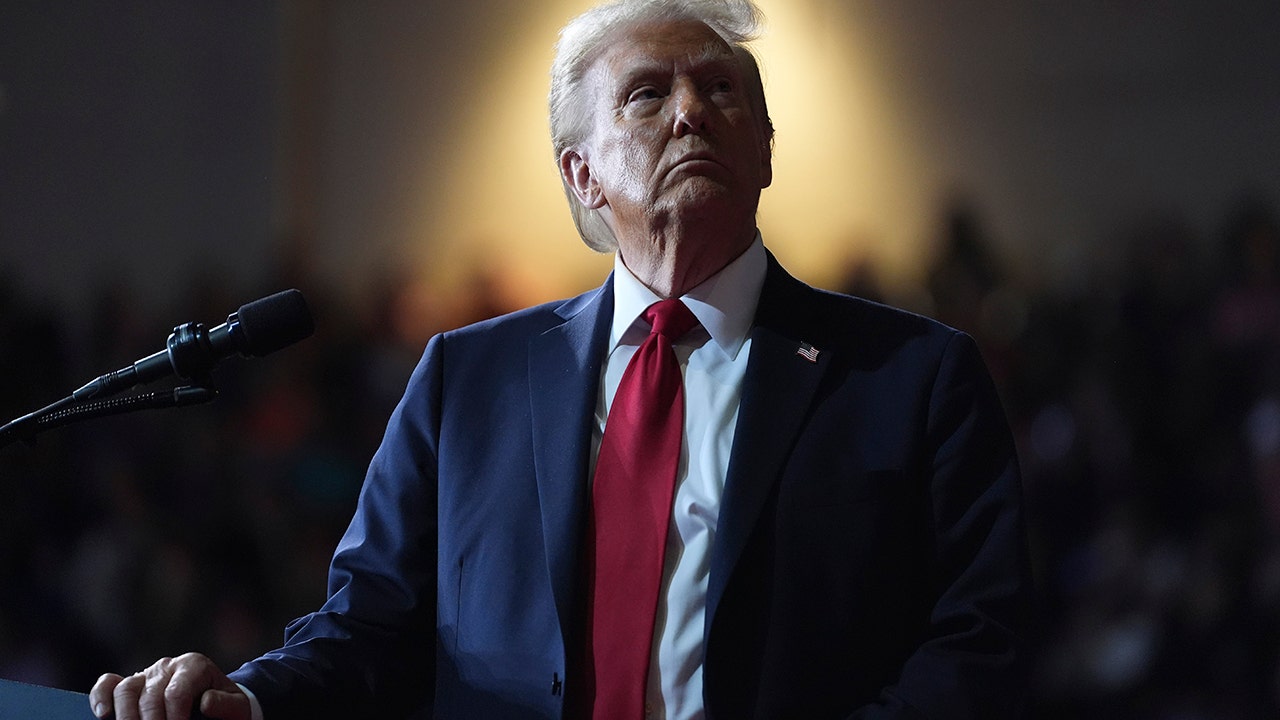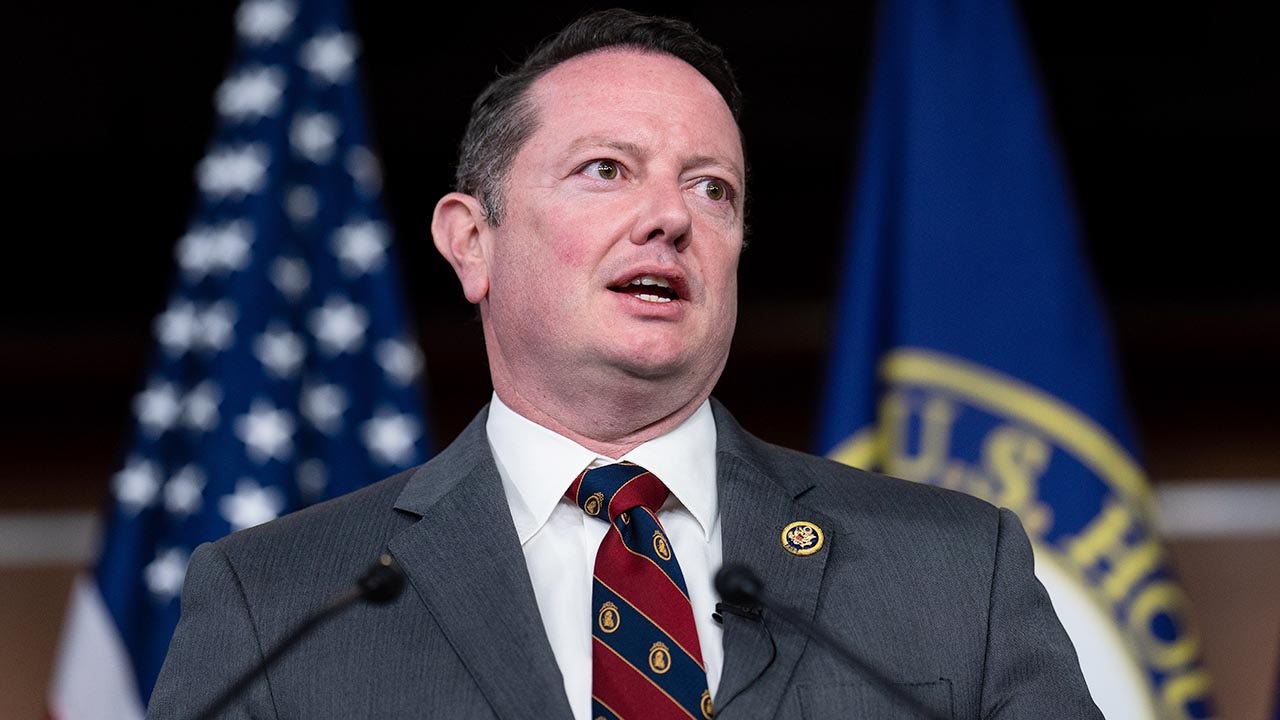So you want to know about “recess appointments”?
Well, recess is over and class is in session.
Let’s start with four main sections in the Constitution:
“[The President] shall nominate, and by and with the Advice and Consent of the Senate, shall appoint Ambassadors, other public Ministers and Consuls, Judges of the supreme Court, and all other Officers of the United States” – Article II, Section 2 of the Constitution
PRESENT AND ACCOUNTED FOR: HOUSE REPUBLICANS’ SMALL MAJORITY COULD MAKE ATTENDANCE A PRIORITY

Former President Trump waves during a campaign rally at Williams Arena at Minges Coliseum on Oct. 21, 2024, in Greenville, North Carolina. (Win McNamee/Getty Images)
“The President shall have Power to fill up all Vacancies that may happen during the Recess of the Senate, by granting Commissions which shall expire at the End of their next Session.” – Article II, Section 2 of the Constitution
“Neither House, during the Session of Congress, shall, without the Consent of the other, adjourn for more than three days, nor to any other Place than that in which the two Houses shall be sitting.” – Article I, Section 5 of the Constitution
And then there is this particularly thermonuclear passage:
“[The President} may, on extraordinary Occasions, convene both Houses, or either of them, and in Case of Disagreement between them, with Respect to the Time of Adjournment, he may adjourn them to such Time as he shall think proper.” – Article II, Section 3 of the Constitution
Let’s work through the mechanics of each one.
It’s tradition for a president to nominate various persons for his Cabinet, other administration positions and the judiciary. However, the Senate must confirm those figures through a roll call vote on the floor. The confirmation process usually entails formal visits with senators, background checks on nominees by the FBI or the committees of jurisdiction, hearings with the nominee and other witnesses who either support or oppose the nominee, a committee vote to discharge the nomination to the floor, debate on the floor and a final confirmation vote. This is the Senate’s “Advice and Consent” exercise. It’s a responsibility most senators take very seriously. Many passionately guard those prerogatives.
‘IT’S A SETBACK’: DEMOCRATS CRITICIZE BIDEN OVER HUNTER PARDON

Donald Trump watches a video screen at a campaign rally at the Salem Civic Center, in Salem, Virginia, Nov. 2, 2024. (AP Photo/Evan Vucci, File)
For instance, incoming President Trump nominated former Rep. Matt Gaetz, R-Fla., for attorney general. Gaetz met with several Republican members of the Senate Judiciary Committee last month. But Gaetz’s selection never got to the vetting phase or even a hearing. It was clear to Gaetz – and most senators – that the nominee wasn’t confirmable by the Senate. Confirmation of Gaetz would have represented the “consent” provision of the Constitution. However, the abrupt withdrawal of the nominee – after all of the Senate’s closed-door muttering – certainly reflected “advice.”
After Gaetz, expect lots of consternation in the coming weeks about the viability of Defense secretary nominee Pete Hegseth, Director of National Intelligence nominee Tulsi Gabbard, Health and Human Services secretary nominee Robert F. Kennedy and FBI Director pick Kash Patel.
This is where the concept of “recess appointments” could come in. If the Senate fails to confirm some of Trump’s nominees, there are suggestions that Trump might try to circumvent the Senate and temporarily install these persons in those roles on an “acting” basis.
This is the application of Article II, Section 2 of the Constitution. It allows the president to “fill up all Vacancies that may happen during the recess of the Senate.”
A “recess appointment” may only serve in the role until the end of a given, two-year Congress. The Founders crafted the concept of a recess appointment so the government could have a stand-in for a period if a given office suddenly became vacant due to death or resignation. Congress was often out of session for months at a time in the early days of the republic. Transportation was tough. It was a challenge to quickly confirm replacements if the Senate wasn’t meeting. So the Founders created the fail-safe of “recess appointments.” That way, the government wasn’t hamstrung waiting on the Senate to eventually reconvene and confirm someone to an important government post.
But how would a recess appointment work in the current environment? And could a president just bypass the Senate and install someone if Congress wasn’t meeting? In theory, yes. And it’s possible that a president could do so if a nomination is stalled or someone is unconfirmed.
THOMAS MASSIE, CONSERVATIVE COMMENTATOR VOCALLY OPPOSE TRUMP’S DEA NOMINEE

Trump has yet to say who he prefers to lead the GOP conference. (Reuters)
However, the brutal truth is that recess appointments are becoming rare. Both Trump and President Biden had precisely zero recess appointments. President Obama had 32. The last recess appointment was Richard Griffin Jr. to the National Labor Relations Board on Jan. 4, 2012. He was part of four recess appointments by Obama on that day. Griffin and two others were placed at the NLRB. Obama also slotted Richard Cordray as director of the Consumer Financial Protection Bureau.
By contrast, President George W. Bush had 171 recess appointments. President Bill Clinton scored 139.
The lynchpin to the entire enterprise is whether there is in fact an appropriate “recess” of the Congress. Only under such a recess would the Senate reside in the proper parliamentary posture to allow for the potential of a recess appointment. It’s been years now since both the House and Senate have technically abandoned Washington for more than three days. That’s to guard against the chance of a recess appointment. The House and Senate used to frequently approve what’s called an “adjournment resolution.” That granted both the House and Senate leave from Capitol Hill for extended periods – such as over the holidays, Thanksgiving, Easter and Passover, Independence Day and the “August recess.” But those are infrequent.
This fall, both the House and Senate were “out” for part of September, all of October and a chunk of November. However, both bodies convened abbreviated sessions every three days. Each one lasted just a few seconds. That’s de rigueur in Washington because the House and Senate can’t approve an adjournment resolution. The House and Senate just don’t snap their fingers and they’re out. Like everything on Capitol Hill, both bodies must vote to adjourn. Democrats control the Senate. So it might not be a problem approving an adjournment resolution there. But the GOP controls the House. House Republicans would never green light an adjournment resolution, presenting the potential for Biden to make a recess appointment. So each body now meets for just a few seconds every three days to forestall recess appointments.
This phenomenon reflects the power of Article I, Section 5, as neither body “shall, without the consent of the other, adjourn for more than three days.”
During his time in office, Obama believed the House and Senate were truly “in recess” – despite convening every three days. Frustrated at the pace of his nominations, the White House concluded that the three-day operation wasn’t sufficient for the House and Senate to conclude they were “out.” Hence the appointment of Griffin and others during a 2012 window between sessions.
TRUMP TAPS DAUGHTER TIFFANY’S FATHER-IN-LAW MASSAD BOULOS AS SENIOR ADVISERS ON ARAB AND MIDDLE EASTERN AFFAIRS

Former President Trump speaks at a campaign rally at the Johnny Mercer Theatre on Sept. 24, 2024, in Savannah, Georgia. ( Brandon Bell/Getty Images)
But in 2014, the Supreme Court found that the Obama administration overstepped its bounds with the recess appointment. In NLRB v. Canning, the high court found that if the Senate says it’s out, it’s out. In other words, the executive branch of government has no authority interpreting actions of the legislative branch of government.
Moreover, Article I, Section 5 of the Constitution allows each body of Congress to “determine the Rules of its Proceedings.” That said, for the first time in U.S. history, the Supreme Court established a length of time the House and Senate must be out for there to be a “recess” and the possibility of a “recess appointment.” In a 5-4 ruling, the Supreme Court decided that recess appointments are permissible if the House and Senate are out for a period of at least 10 days.
So let’s say the Senate is struggling to confirm some of the incoming president’s most-controversial nominees. Could Trump ask the House and Senate to call it quits for 10 days so he could slide a troubled nominee into place? In theory, yes. But parliamentarily, what would it take for the House and Senate to both be out of session in order to strategically create a political crevasse wide enough for a recess appointment?
It’s about the math.
In the new year, Republicans will control the House with perhaps as few as 217 seats. One race in California still doesn’t have a winner. The new Congress starts with one vacancy. The Senate will be 53-47 in favor of the GOP. Republicans really can’t lose any votes toward adopting an adjournment resolution. Senate Republicans can lose up to three of their own – and have Vice President JD Vance break the tie on an adjournment resolution. But four votes? They’re out of luck.
Here’s the challenging part:
It’s far from certain that both the House and Senate could ever muster the votes to approve an adjournment resolution for the sole purpose of engineering a recess appointment – or even a batch of them. Some House Republicans might balk. But the bigger issue could be Senate Republicans. Many senators simply won’t forgo their responsibilities to provide advice and consent. They guard those traditions closely. Plus, they worry about establishing what some would view as a terrible precedent to allow a president to install their nominees, no matter how embattled they may be. After all, Senate Republicans would rue the day they vote to adjourn in favor of installing one of Trump’s nominees – lest “President Newsom” or “President Whitmer” try the same thing in 2029.
TRUMP NOMINATES CHARTLES KUSHNER TO SERVE AS US AMBASSADOR TO FRANCE: ‘STRONG ADVOCATE’

The U.S. Capitol in Washington, D.C. (iStock)
In NLRB v. Canning, late Supreme Court Justice Antonin Scalia even argued against the concept of recess appointments in the modern Senate. In today’s world, the Senate can reconvene quickly to consider nominees.
“The only remaining practical use for the recess appointment power is the ignoble one of enabling presidents to circumvent the Senate’s role in the appointment process, which is precisely what happened here,” said Scalia.
And even if the House and Senate approved an adjournment resolution of more than 10 days, exactly when would the recess fall? Congressional Republicans promise a robust agenda in 2025. When the House and Senate are out, they are out. That means nothing on the floor in both bodies for at least a week-and-a-half. No legislation on tax cuts. Nothing dealing with the debt ceiling or cutting spending. Forget about immigration policy.
So the political postulate of a recess appointment is fascinating. But it’s altogether something different in practice.
This brings us to Article II, Section 3 of the Constitution. This is the “thermonuclear passage” I referred to earlier. The Constitution states that “on extraordinary Occasions” the President may “convene both Houses, or either of them, and in the case of Disagreement between them with Respect to the Time of Adjournment, he may adjourn them to such Time as he shall think proper.”
U.S. presidents have never exercised this authority to “adjourn” Congress. No one knows what constitutes “extraordinary Occasions.” And, a lay reading of Article II, Section 3 suggests there must be a discrepancy between the House and Senate over adjourning – for the purposes of a recess appointment. In other words, the House may be able to approve the adjournment resolution – and the Senate may not or vice versa.
In theory, President-elect Trump could try this gambit to adjourn Congress. But this is new constitutional turf. Yes. A recess appointment like Cordray or Griffin may find themselves in the job. But the Trump administration would inevitably find itself in front of the Supreme Court about the validity of those appointments. Just like the Obama administration.
CLICK HERE TO GET THE FOX NEWS APP
So recess appointments are theoretically possible. But in reality, they are very hard to put into place.
And for our purposes, it’s time for a recess.
Class dismissed.






